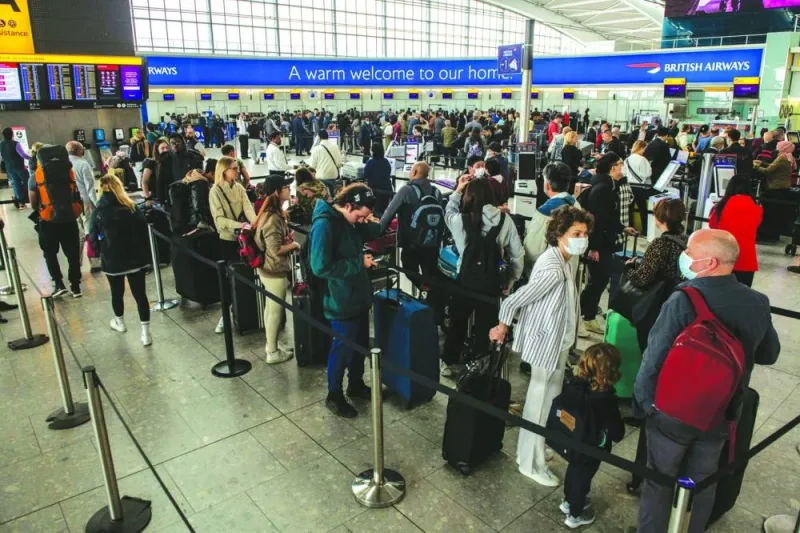Majority of airlines around the world have started making profits after passengers returned to the skies, making the best use of restriction-free travel, post-pandemic.
Airline quarterly profits have shot past pre-pandemic levels with the industry on track to a profitable, safe, efficient, and sustainable future.
According to the International Air Transport Association (IATA) Director General Willie Walsh, airline net profits are expected to reach $9.8bn in net profit this year based on the projected $803bn of revenues.
The estimated net profit this year is more than double the previous forecast of $4.7bn in December 2022. In his report to the 79th IATA Annual General Meeting in Istanbul in June, Walsh said global air passenger traffic is currently more than 90% of 2019 levels.
Some 4.35bn people are expected to travel in 2023, which is closing in on the 4.54bn who flew in 2019. Cargo volumes are expected to be 57.8mn tonnes, which has slipped below the 61.5mn tonnes carried in 2019 with a sharp slowing of international trade volumes.
Certainly, demand looks robust for the rest of the summer, but industry captains have struck a cautious tone about travel demand for the rest of the year and warned fares may soften by 2023-end on macroeconomic trends.
Consumer price inflation, higher interest rates and higher mortgage rates might affect consumer spending in the second half of the year, cautioned Ryanair CEO Michael O'Leary.
“Ryanair might have to stimulate demand through lower prices this winter, when we will have 25% more seats to fill than in 2019,” O'Leary noted.
Airfares have surged alarmingly, up to 50% in key international markets of late, which industry experts say hampers industry recovery.
On the other hand, airport charges have remained flat even as inflation rates soared over 10% since 2019, a recent study by Airport Councils International (ACI) Asia-Pacific has shown.
The study, undertaken in collaboration with Flare Aviation Consulting, examined around 36,000 routes in the top 10 aviation markets in Asia-Pacific and the Middle East, reveals an alarming increase in international airfares by up to 50%, while domestic routes went up by less than 10%.
The markets that saw the highest airfare increase are India (41%), United Arab Emirates (34%), Singapore (30%) and Australia (23%).
Unexpectedly, in the first quarter of 2023, despite a progressive increase in traffic, domestic airfares have continued to increase in several of these markets, including India, Indonesia, Saudi Arabia, South Korea and Japan, only decreasing marginally on international routes.
ACI Asia-Pacific noted that airlines are capitalising on low competition and pent-up demand to increase profits and recover losses incurred during the pandemic, while airports continue to provide enhanced services to passengers despite incurring heavy operational and capital expenditures.
Expressing concerns about the high-pricing practice, Stefano Baronci, director general, ACI Asia-Pacific said: “These excessive airfares threaten the industry's long-term recovery and may have a far-reaching influence on the associated industry by reducing demand for air travel and increasing the financial burden on the already stressed sector. Airlines should exercise fair pricing that supports recovery and safeguards consumers’ interests.
“A supply-demand imbalance should not be exploited by airlines at the expense of customers by restricting the capacity, especially international one which is a key driver of social and economic growth and a major source of revenues for the airport sector. We urge airlines to carefully consider the long-term impacts of their pricing decisions. At the same time, governments must consider liberalising markets through policies such as open skies, which will allow competition while keeping airfares under control.”
Fuel prices and inflation are responsible for a significant portion of airfare increase. Fuel prices went up 76% in 2022 compared to 2019. The airlines’ costs increased as the consumer price index saw an average 10% increase over the same period.
Obviously, higher airfares make it more expensive for passengers to travel by air. This will deter some potential travellers, particularly budget-conscious individuals or families, who may opt for alternative modes of transportation or choose to postpone or cancel their trips altogether.
Consequently, airlines are likely to face dwindling demand for their services, in the medium term.
As air travel plays a vital role in tourism industry, higher airfares will have a negative impact on the sector, both domestically and internationally.
Pratap John is Business Editor at Gulf Times. Twitter handle: @PratapJohn

Passengers at British Airways’ check in desks at London Heathrow Airport. Majority of airlines around the world have started making profits after passengers returned to the skies, making the best use of restriction-free travel, post-pandemic.

